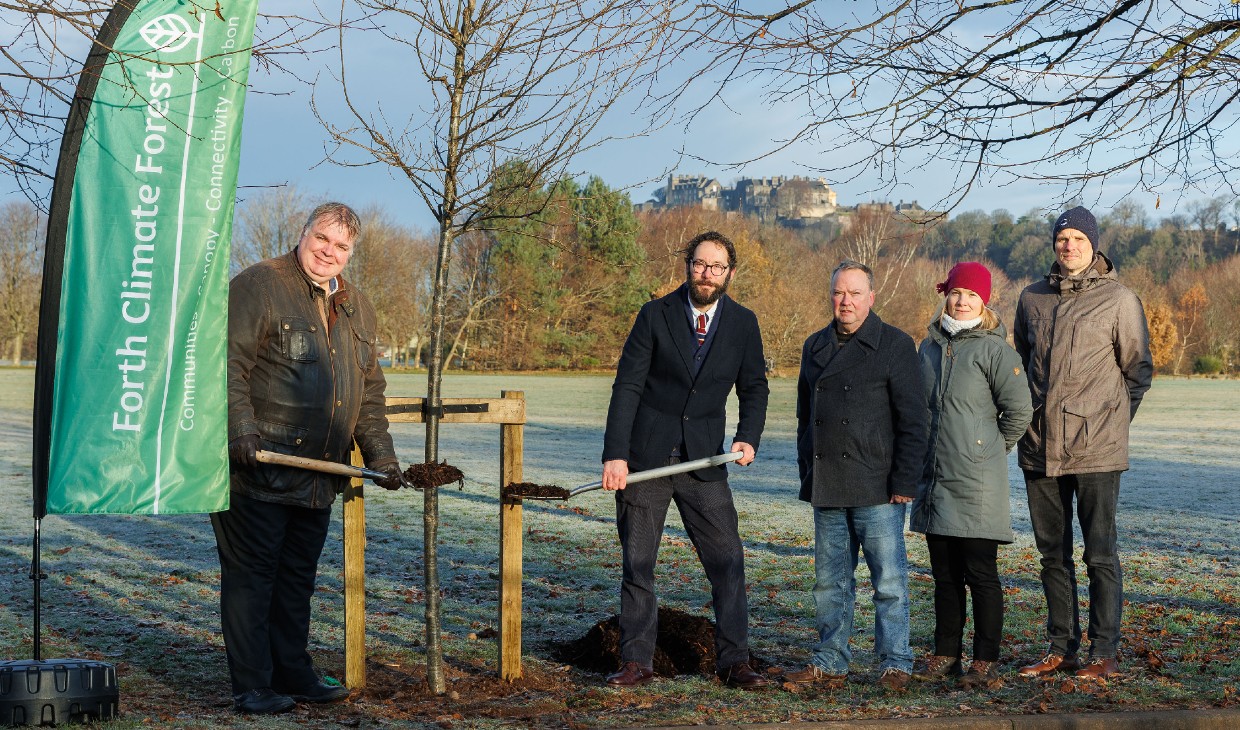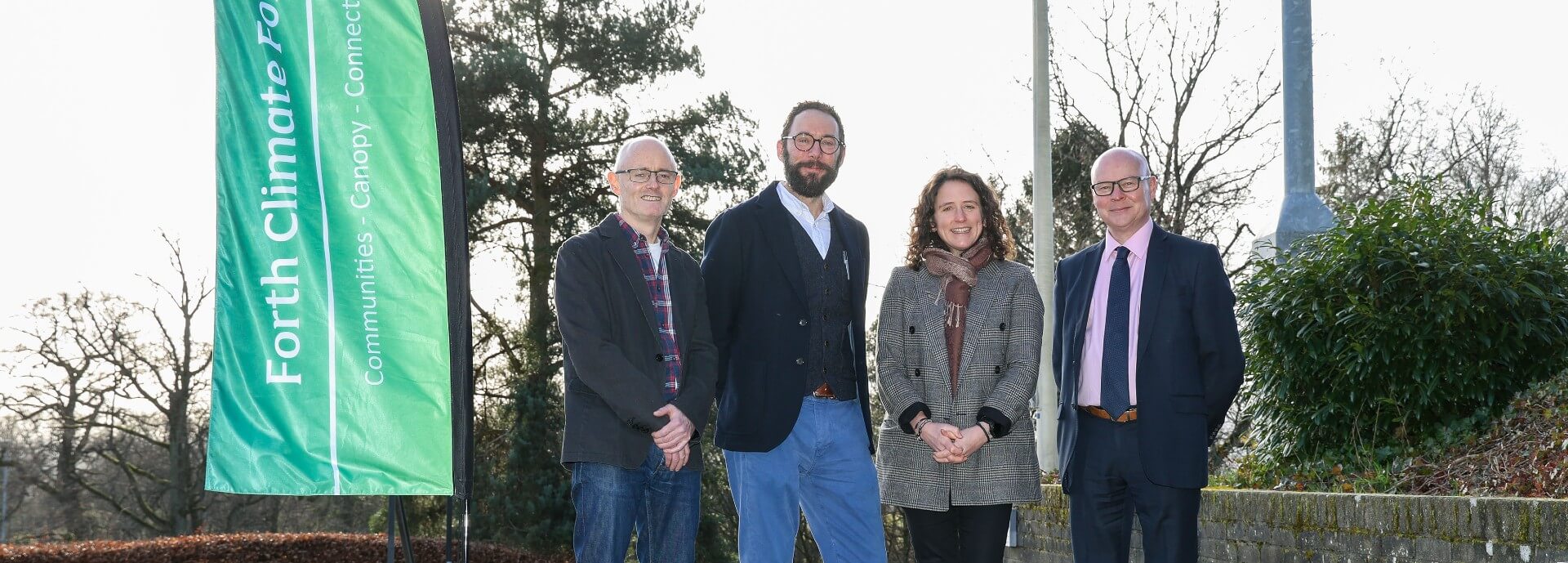An ambitious plan to plant millions of trees across the Forth Valley has been praised by the Cabinet Secretary for Rural Affairs during a visit to the University of Stirling.
Mairi Gougeon MSP said the Forth Climate Forest will tackle climate change and improve the lives of people in Stirling, Clackmannanshire and Falkirk.
The University-led initiative will see 16 million trees planted over the next decade to help prevent the extremes of flooding and temperatures, purify our air and absorb carbon from the atmosphere, delivering long-term ecological, climate and social benefits.
Trees will be planted in school grounds, on vacant and derelict land, and across parks. Existing woodlands will be stitched together, where possible, to create wildlife corridors that boost biodiversity, offering a safe habitat for birds, bats, bees and all manner of woodland animals.
Tackling climate change
Mairi Gougeon MSP, Cabinet Secretary for Rural Affairs, Land Reform and Islands, said: “This project is a great example of many partners working closely together to help tackle climate change and improve the lives of people living and working in Clackmannanshire, Falkirk and Stirling.
“The important woodland work will involve communities, boost tree cover in the region, connect the network of native woodlands and increase the opportunities for carbon sequestration.
“I am very pleased that the project will expand woodland greenspace in areas of higher deprivation and at risk from the impacts of climate change.
“If we can connect people with their local greenspace it can really help transform their lives in a very positive way. I wish the Forth Climate Forest every success for the future.”
During her visit to the University of Stirling, Ms Gougeon attended a reception event for Forth Climate Forest stakeholders, including joint funders Woodland Trust Scotland, Scottish Forestry, Clackmannanshire Council, Falkirk Council and Stirling Council.
Director of Forth Climate Forest, Doug Worrall, said: “We were delighted to welcome the Cabinet Secretary to the University of Stirling to join our discussion about how the Forth Climate Forest will help communities adapt to the effects of climate change, create places where wildlife can thrive and make a significant contribution towards the Scottish Government’s national tree planting targets.
“The event was a great opportunity for organisations who are already involved in creating the Forth Climate Forest to showcase the work they have been doing across Stirling, Clackmannanshire and Falkirk Council areas, and for others to find out how they can contribute to achieving this tree planting goal.”
The first trees were planted in Loch Lomond and The Trossachs National Park at Glen Finglas near Brig o’Turk on November 27 last year, the first day of National Tree Week 2023. In the course of the week, trees were also planted by local authority leaders in Stirling, Clackmannanshire and Falkirk.

Pictured from left to right at Kings Park in Stirling is Councillor Chris Kane, Stirling Council Leader; Douglas Worrall, Director of Forth Climate Forest, University of Stirling; Peter Lowe, Woodland Trust Scotland; Dr Sandra Engstrom, Forth Climate Forest, University of Stirling; Guy Harewood, Forth Climate Forest Development Officer, University of Stirling.
Major benefits
Forth Climate Forest is part of Scotland’s International Environment Centre at the University of Stirling, a pioneering collaboration that will create an innovation community in Forth Valley, driving the creation of a net zero regional economy and acting as a global exemplar of low-carbon growth.
Dean of the Faculty of Natural Sciences at the University of Stirling, Professor Alistair Jump, who hosted the Forth Climate Forest reception on February 6, said: “The Forth Climate Forest will bring major benefits for people, biodiversity and management of climate change impacts, alongside speeding the region's journey to a low-carbon future.
“We were delighted to be share our ambition with the Cabinet Secretary and we look forward to seeing this exciting project make a difference to communities throughout Forth Valley.”
The Forth Climate Forest covers Clackmannanshire, Falkirk and Stirling Councils, as well as a large part of Loch Lomond and The Trossachs National Park.
Forth Climate Forest is a partnership initiative, hosted by University of Stirling through Scotland’s International Environment Centre. SIEC is led by the University of Stirling as part of the £214 million Stirling and Clackmannanshire City Region Deal that will drive productivity inclusive economic growth throughout the region.
Forth Climate Forest funding has been secured, for the first two years, from the Woodland Trust Scotland, Scottish Forestry, Clackmannanshire Council, Falkirk Council and Stirling Council.

